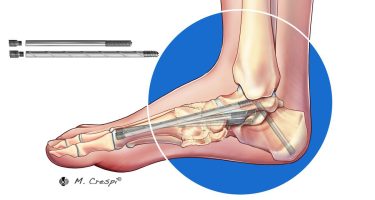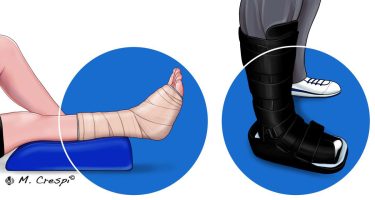LRS Advanced™
THIS INFORMATION IS FOR HEALTHCARE PROFESSIONALS ONLY
THIS INFORMATION IS FOR HEALTHCARE PROFESSIONALS ONLY
(a) Very short tibia. LRS ADVanced (53000 series) in place; proximal and distal osteotomies.
(b) Simultaneous lengthening at each osteotomy site. Use of Micrometric Swivelling Clamp, which can be used at either end of the adult rail, to correct any varus or valgus occurring during lengthening.
Caution: Resect at least 1 cm of fibula; distal syndesmosis screw.

